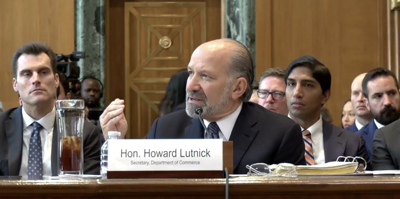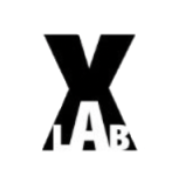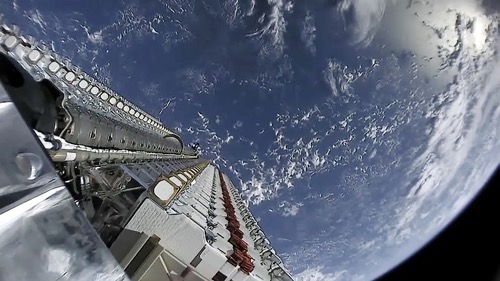
In the wake of the Trump administration’s re-writing the rules around how federal funds can be spent to expand high-speed Internet access, state broadband offices are in the midst of revamping their broadband deployment grant programs to comply with a “technology-neutral” framework recently imposed on the $42.5 billion federal BEAD (Broadband Equity, Access, and Deployment) program.
Though most states hoped to maximize federal grant funding to build fiber networks, the new guidance released by NTIA in June requires states to ignore the aim of Congress enacted under the bipartisan infrastructure law.
The new NTIA rules call for states to de-prioritize fiber and give equal weight to Low Earth Orbit (LEO) satellite technologies – something many observers see as a gift to Starlink and a way for the President’s biggest campaign contributor to hoover up additional subsidies.
As states wrestle with how to re-do their scoring rubrics used to determine grant awards, today four leading broadband deployment scholars working with the X-Lab released an analysis that may help state broadband offices evaluate “the capacities and saturation limits of the Starlink satellite infrastructure.”
The overarching goal is to help states determine where – and if – Starlink can meet federal requirements for broadband, which is defined as delivering minimum connection speeds of at least 100 Megabits per second (Mbps) download and 20 Mbps upload.
News of the analysis was first published in the Washington Post today, in which Shira Ovide, author of the Tech Friend newsletter, observes:
“An irony with Elon Musk’s Starlink internet service beamed from space: The more popular it becomes, the worse its speeds and reliability tend to get. Those limitations are known, but a new analysis estimates the tipping point at which Starlink connections could bog down.”
Ovide zeroes in on the big takeaway: “within the geographic coverage area of a single Starlink satellite – an estimated 62.9 square miles or roughly the area of Tacoma – hitting 419 Starlink customers could become a problem. That’s an average 6.7 Starlink customers per square mile,” which “has implications for Starlink customers and for the New Deal-style government program to expand internet access to everyone.”
Devil In the Details

According to the BEAD Restructuring Policy Notice issued by the NTIA – the agency responsible for administering the BEAD program – state broadband offices are now required to adhere to “technology neutrality," which explicitly “rejects the Biden Administration’s imposition of technology preferences,” namely fiber.
Beyond that, the new rules say, states are now required to take the lowest qualified bid and only consider secondary factors if the next highest bid is within 15 percent of the lowest bid.
But, in the words of the X-Lab analysis, here’s the rub:
“Many State Offices are concerned that Starlink proposals may be the lowest bid and alternative proposals may not be within the 15% window for consideration. What this analysis presents is that across many geographic areas Starlink may not be a qualified bidder as it may be unable to attain the required 100/20 Mbps service level (and, in deploying Starlink services, may actually degrade pre-existing users’ services to the point that they no longer receive minimal broadband speeds).”
The analysis found that even in lower population density regions, whenever the number of unserved and underserved locations that subscribe to Starlink “is greater than 6 households per square mile within a beam’s coverage area, further due diligence is essential prior to funding allocations.”
Analysis Limited by Starlink’s Lack of Transparency
While the study is replete with high-level calculations of “phased-array transceivers operating at 550 km altitude” and “Estimated Beam Coverage Area(s),” the authors note at the outset that the analysis is “based, in part, on public information available through June 2025” and “may not accurately represent the full technical capabilities of Starlink satellites.”
“Because Starlink does not publish thorough and detailed technical specifications for their satellites, the assumptions made in these analyses may be incorrect.”
Still, the lead author of the analysis Sascha Meinrath – X-Lab Director and Palmer Chair of Telecommunications at Penn State University – says while the findings may be limited, it will at least give state broadband offices the ability to ask the right questions and push Starlink to provide detailed answers and proof it can deliver.

Meinrath and his co-authors (Karl Grindal, Glenn Fishbine and Nancy DeGidio) candidly write that the “full technical specifications for Starlink are not publicly available and the assumptions utilized to produce this analysis are explicitly conditional.”
“Overall,” they write, “these analyses underscore the need for comprehensive capacity analyses prior to allocation of Federal funding for satellite connectivity and that a failure to take into account fundamental real-world limits to Starlink capacity will result in the allocation of Federal funding to support connectivity that may not meet the eligibility requirements to receive Federal funding, thus raising serious concerns over waste, fraud, and abuse.”
Is LEO Lyin' in Wait?
The real aim of the analysis, say Meinrath et al, is “to make transparent the need for independent verification of capacity limits to the Starlink infrastructure, and the crucial need for detailed engineering, propagation, and capacity analysis to be conducted for any area where Starlink and other satellite broadband solutions are proposed.”
Furthermore, they write, given the documented capacity limitations to satellite broadband service, state broadband offices would be wise to “independently (verify Starlink service claims) prior to funding allocations to avoid harmful network congestion that could degrade services to Starlink users within an over-subscribed geographic area.”

Similar concerns have long been shared by a variety of other industry experts.
A study published in 2021 by the Fiber Broadband Association (FBA) in partnership with the research firm Cartesian raised questions about Starlink’s capacity constraints, concluding then that “LEO satellites are a complementary alternative broadband technology, limited to remote, hard to reach, low-density housing locations, and/or for quick service restoration where physical infrastructure has been destroyed due to natural disasters.”
And as recently as last month, Ookla reported that "only 17.4% of U.S. Starlink Speedtest users nationwide were able to get broadband speeds consistent with the FCC’s minimum requirement for broadband of 100 Mbps download speeds and 20 Mbps upload speeds," though the popular company known for measuring Internet connection performance did add that "the satellite provider is becoming an increasingly attractive broadband option for many."
The Washington Post did reach out to Starlink for a response to the white paper but did not get one. However, the outlet – whose owner is launching a competing satellite Internet service (Project Kuiper) – did speak to Chris Quilty, founder of the consultancy Quilty Space, in defense of Starlink.
Quilty argued that the government has shied away from awarding grant money for LEO Internet service because of concerns the technology just isn’t up to par.

He also shared his belief that Starlink has markedly improved over the years and “may soon be on par with conventional internet lines in some parts of America at lower costs to taxpayers.”
It should be noted, however, that Quilty breezed over the fact that Starlink was in fact awarded $886 million in RDOF auction funds but the bid was later rescinded after the FCC determined that Starlink and several other ISPs improperly requested funds to deliver broadband to places like airport parking lots and traffic medians.
Beyond that, the FCC found, Starlink’s “network performance was below the required minimum speeds of 100/20 Mbps” and was not able to demonstrate that “it was reasonably capable of fulfilling RDOF’s requirements to deploy a network of the scope, scale, and size required to serve the 642,925 model locations in 35 states for which it was the winning bidder.”
Potential Tool for State Broadband Offices
While some state broadband offices have already said Starlink would be part of the technology mix to expand broadband access – even before NTIA issued its BEAD Restructuring Policy Notice – the X-Lab analysis may give states welcome insight into how to move forward, especially as personnel is being stretched thin with the Trump administration’s sudden “termination” of the Digital Equity Act.
In Maine, for example, where the state planned to incorporate Starlink into the state’s connectivity plan prior to the NTIA rule change, Maine Connectivity Authority President Andrew Butcher recently told ILSR that “we’d like to maximize fiber projects while being strategic about how to incorporate multiple technologies.”
Still, Butcher said, the additional workload triggered by the BEAD changes essentially means doing “two years of work in two months. We just have to buckle down and proceed.”
This analysis may help Maine and other states do just that.
Read our policy brief on why we think BEAD should continue to prioritize fiber Internet network
investments here.
Header image of Falcon 9 Starlink rocket in flight after launch courtesy of NARA & DVIDS Public Domain Archive, Creative Commons license, Public Domain Mark 1.0 Universal
Inline image of Commerce Secretary Howard Lutnick testifying before Congress courtesy of Broadband Breakfast
Starlink satellite in orbit courtesy of Wikimedia Commons, Creative Commons license, CC0 1.0 Universal
Inline image of Starlink satellite constellation courtesy of Wikimedia Commons, Creative Commons, Attribution 2.0 Generic






